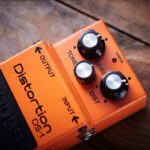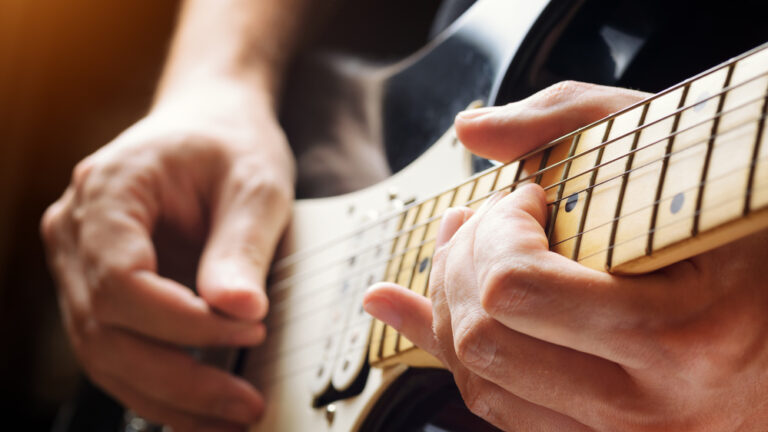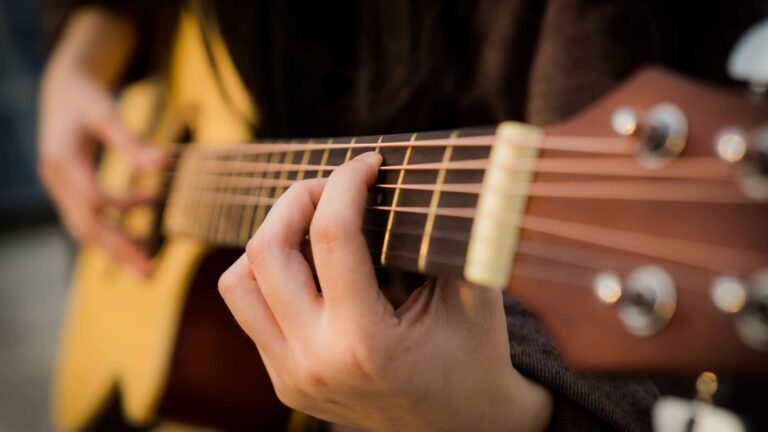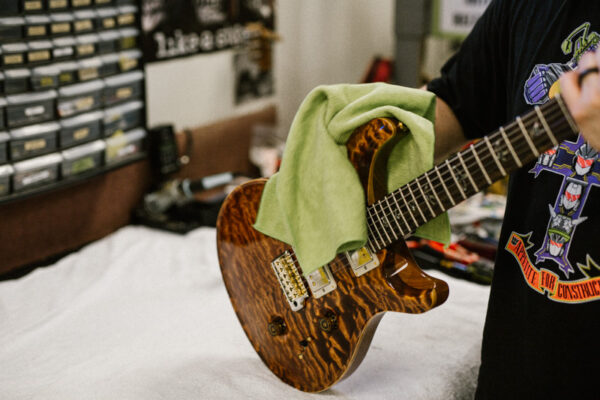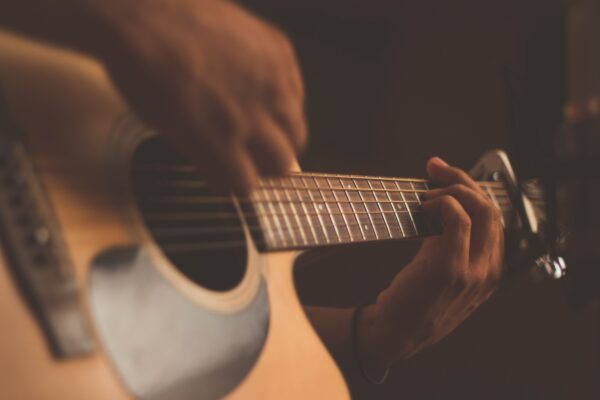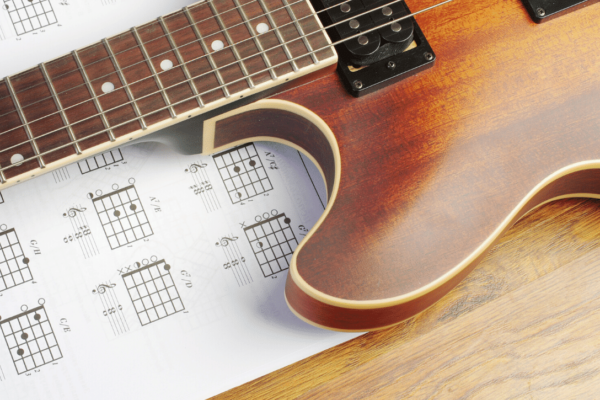Table of Contents
Playing the guitar is an art that has been around for centuries, and it requires skill, dedication, and practice to make it perfect. One technique that guitarists use is the ghost note, and guitarists like Jimi Hendrix and Stevie Ray Vaughan were well-known for using ghost notes.
So, what is a ghost note on a guitar? and how can you learn it? If you want to learn how to play ghost notes, this article is for you!
What is a Ghost Note?
A ghost note is a musical note that’s played softly and doesn’t have a defined pitch, creating a subtle percussive sound. It’s used in funk, R&B, and other genres of music where a rhythmic sound is desired. Ghost notes can be played on any stringed instrument, including the guitar, ukulele, and mandolin.
The term “ghost note” is used due to the fact that the notes are played softly and with a muted tone, creating a “ghostly” sound.
You can create ghost notes by lightly hitting or muting the strings with the fretting hand. They’re not meant to be heard as distinct notes but as a subtle rhythmic texture that provides depth and complexity to a guitar part. Ghost notes are played in between other notes to create a groove or syncopated rhythm.
How You Can Play Ghost Notes
Playing ghost notes on a guitar requires a certain amount of finesse and control. You can use several techniques to create ghost notes. Different guitarists have their own unique approach.
Here are some well-known techniques for playing ghost notes on a guitar:
Palm Muting
Palm muting is a technique where you lightly rest the side of your hand against the strings near the guitar’s bridge. This dampens the strings and creates a percussive, muted sound. You can create different degrees of muting, and you can create ghost notes that are more or less prominent by adjusting the pressure of your hand.
To play a ghost note using the palm muting technique, you would lightly lift your hand off the strings after muting them to create a soft, muted note. This technique is often used in funk and R&B music to create a syncopated rhythm.
Fret Hand Muting
It’s a technique where you lightly touch the strings with your fretting hand to dampen the sound. Using this method, you can create ghost notes by normally playing the note, then immediately muting the strings with your fretting hand. This creates a soft, muted note that adds percussion to the guitar part.
Hammer-Ons and Pull-Offs
Hammer-ons and pull-offs are techniques where you use your fretting hand to play notes without picking the string. To play a hammer-on, you would play a note and then use your fretting hand to “hammer” on the string at a higher fret. To play a pull-off, you would play a note and then use your fretting hand to “pull” the string off the fretboard to create a lower-pitched note.
You can use hammer-ons and pull-offs to create ghost notes by playing a note, hammering on or pulling off to a different note, and then immediately muting the strings with your fretting hand.
Slides
Slides are a technique where you use your fretting hand to slide up or down the fretboard to play different notes. To create ghost notes using slides, you would play a note and then slide up or down to another note. Before playing the following note, you would mute the strings with your fretting hand to create a soft, muted note.
Percussive Techniques
There are also percussive techniques that you can use to create ghost notes on a guitar. These techniques involve tapping, slapping, or striking the strings to create a percussive sound. You can use these techniques to create ghost notes by tapping or striking the strings lightly to create a soft, muted note.
How You Can Master Ghost Notes on a Guitar
Mastering ghost notes on a guitar require practice and patience. Here are some tips to help you improve your technique and control:
Start Slow
When you first start practicing ghost notes, start slow and gradually increase your speed as you become more comfortable with the technique. Focus on keeping a steady rhythm and maintaining control over the volume and tone of the ghost notes.
Practice with a Metronome
Practicing with a metronome can help you develop your timing and improve your ability to play ghost notes in time. Start by setting the metronome to a slow tempo and increase the speed as you get comfortable.
Experiment with Different Techniques
There are many different techniques for playing ghost notes on a guitar, so don’t be afraid to experiment and try different approaches. Some techniques work better for certain styles of music or guitar parts.
Focus on Dynamics
Ghost notes are meant to be played softly and with a subtle touch. Focus on controlling the volume and tone of your ghost notes to create a dynamic, nuanced sound.
Listen to Other Musicians
Listening to other musicians who use ghost notes when they play guitar can help you develop a better understanding of the technique and how it can be used to create different styles of music. Pay attention to the rhythm, timing, and dynamics of the ghost notes they play.
Start Playing Ghost Notes
Once you feel comfortable with the technique, start incorporating ghost notes into your playing style. Try adding ghost notes to different song parts to create a more complex and exciting rhythm. Experiment with different patterns and techniques to create your own unique sound.

I have been playing guitar for the past 15 years, and my knowledge and passion for guitars prompted me to start Guitaresque to share my knowledge, tips, and tricks with other guitar players. The sole purpose of this website is to help and inspire guitar players worldwide, to improve their playing and their love for guitars.



